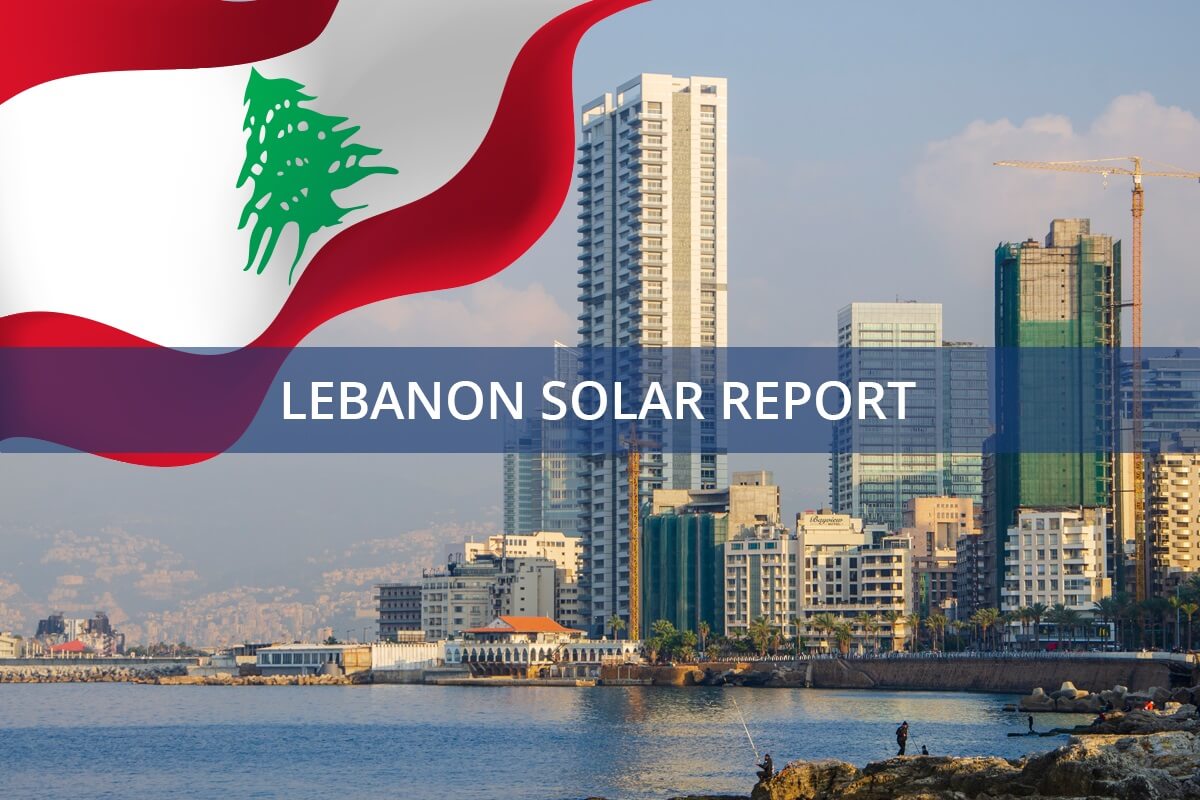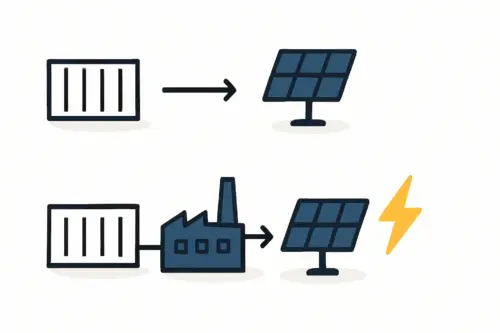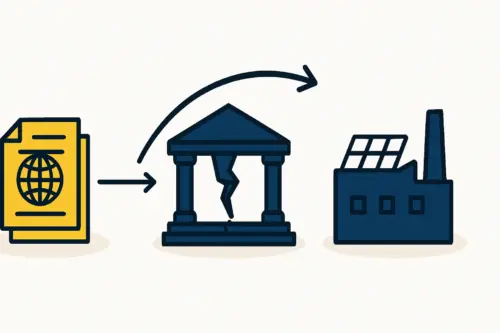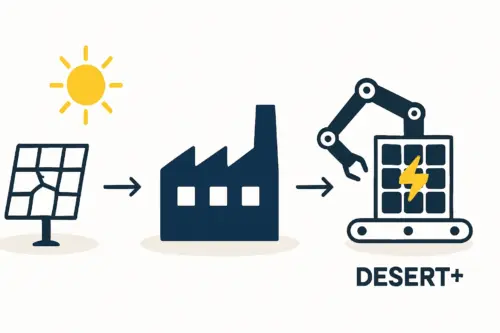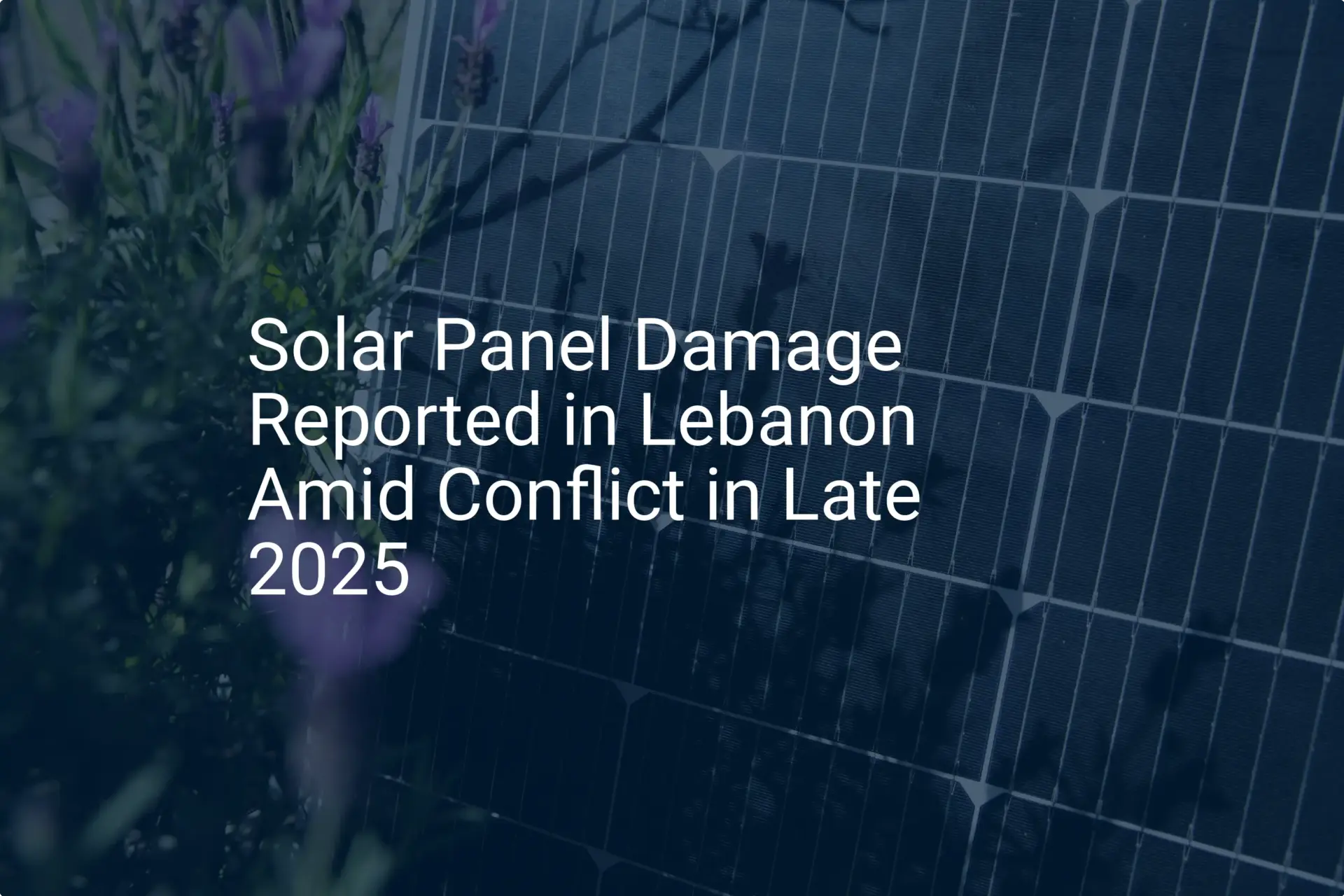Prolonged power cuts are a daily reality in Lebanon, forcing businesses and households to rely on expensive, privately-owned diesel generators. This chronic energy deficit not only hampers economic activity but also drains national and private finances.
Yet this challenge also presents a strategic opportunity: to establish national energy sovereignty through domestic solar module manufacturing. A project of this magnitude requires a robust framework that balances public interest with private sector efficiency. The Public-Private Partnership (PPP) model offers a proven path forward.
This article outlines a strategic, turnkey proposal for government and institutional investors to establish a national-level solar factory in Lebanon, transforming a critical vulnerability into a cornerstone of industrial and economic revival.
The Strategic Imperative for Domestic Solar Manufacturing in Lebanon
Establishing a national solar module production facility is more than an energy project; it is a foundational investment in the country’s future. The rationale extends far beyond simply generating electricity.
A domestic facility would directly address several key strategic objectives, such as the national energy goals outlined by entities like the Lebanese Center for Energy Conservation (LCEC):
-
Energy Security: A local manufacturing plant reduces dependence on imported solar panels, insulating the country from global supply chain disruptions and price volatility while providing a stable, predictable supply for national solar energy projects.
-
Economic Development: Such a facility would create hundreds of skilled jobs in engineering, manufacturing, and logistics, stimulating local economies and fostering a new, high-tech industrial sector.
-
Technology Transfer: Partnering with an experienced international firm facilitates the transfer of advanced manufacturing knowledge and processes, building a sustainable base of local expertise.
-
Foreign Exchange Savings: By producing modules domestically, Lebanon can significantly reduce the foreign currency required for energy infrastructure imports, strengthening its economic position.
-
Export Potential: A facility producing modules certified to international standards can serve growing regional markets, creating a new revenue stream for the nation.
Ready to make big Profits?
The solar Industry is Booming
WE HELP NEWCOMERS to the solar industry start their own solar module production line. Customers can make BIG PROFITS by selling modules and finding investors, without wasting money and time on things they don't need!
By leveraging Lebanon’s high solar irradiation, a domestic manufacturing capability would turn a natural advantage into a tangible economic engine.
Understanding the Public-Private Partnership (PPP) Model for Industrial Projects
A Public-Private Partnership is a long-term contract between a private party and a government entity for the provision of a public asset or service, where the private party bears significant risk and management responsibility. For a solar factory, this model allows each partner to contribute its unique strengths.
The Public Sector’s Role (The Government): The government acts as the enabler and strategic partner. Its primary contributions include providing the land, creating a supportive regulatory framework with streamlined permits and tax incentives, and potentially serving as a primary customer through offtake agreements for large-scale national solar farms.
The Private Sector’s Role (The Operator/Investor): The private partner contributes technical expertise, operational efficiency, technology, and a significant portion of the financing. This partner is responsible for the design, construction, and day-to-day management of the factory, ensuring it operates to international standards of quality and productivity.
This synergy de-risks the project for both sides. The government ensures the project aligns with national interests, while the private sector’s involvement guarantees technical competence and operational excellence. As experience from turnkey projects demonstrates, this model is particularly effective in emerging markets where bridging the gap between public vision and technical execution is critical.
A Phased Turnkey Approach to Establishing the Facility
A project of national importance demands a meticulously planned, phased approach. A turnkey model, where a single expert partner manages the entire process from conception to operation, ensures efficiency and accountability.
Phase 1: Feasibility and Strategic Planning (Months 1-3)
The foundation of the project is a comprehensive feasibility study. This initial phase involves detailed market analysis to define production capacity, select technology, and thoroughly assess the investment requirements for a solar factory. A robust business plan is developed, outlining financial projections, supply chain logistics for raw materials, and a site selection analysis.
Phase 2: Partner Selection and PPP Structuring (Months 4-6)
Following the feasibility study, the public entity initiates a transparent tender process to select the ideal private partner. The criteria should prioritize technical experience, financial stability, and a proven track record in delivering complex industrial projects. During this phase, the legal and financial structure of the PPP is finalized, clearly defining the roles, responsibilities, and risk allocation for each party.
Phase 3: Design, Procurement, and Construction (Months 7-15)
With a partner selected, the project moves into the execution stage. This involves the detailed design of the factory layout and the procurement of all necessary solar panel manufacturing equipment. Opting for a complete turnkey solar manufacturing line from an experienced provider ensures that all machinery is fully integrated and optimized for the specified output and technology. This phase covers everything from civil works and building construction to the installation of production machinery.

Phase 4: Commissioning, Training, and Operation (Months 16-18)
The final phase focuses on commissioning and rigorously testing the installed equipment. A critical component of the turnkey approach is the comprehensive training of the local workforce. This knowledge transfer ensures that the local team can operate and maintain the facility independently, guaranteeing the project’s long-term sustainability. The facility also undergoes the necessary audits to achieve key international certifications (e.g., IEC), which are vital for quality assurance and export eligibility.
Key Success Factors and Overcoming Common Challenges
While the opportunity is immense, executing a PPP of this scale requires navigating several potential challenges with foresight and strategic planning.
-
Stable Regulatory Framework: The government must provide a clear, long-term legal and regulatory environment that gives private investors the confidence to commit capital. This includes predictable policies on energy, trade, and investment.
-
Robust Financial Structuring: The project would likely require a blended financing model, combining public funds, private equity, and loans from international development banks. A transparent and well-structured financial plan is essential to attract investment.
-
Bridging the Technical Knowledge Gap: The public partner often lacks the specialized expertise to define technical specifications or evaluate bids. Engaging an independent technical advisor is crucial to ensure the project is built on a sound technical foundation.
-
Supply Chain Management: A detailed logistics plan for importing raw materials (such as solar cells, glass, and aluminum frames) is necessary. Over time, the project can act as an anchor to attract secondary industries and localize parts of the supply chain.

Frequently Asked Questions (FAQ)
What is a realistic production capacity for a national factory?
For a country of Lebanon’s size and energy needs, a facility with an initial annual capacity of 200–500 MW is a strategic starting point. This capacity is large enough to make a significant national impact while being scalable for future growth.
How many jobs can a facility of this scale create?
A 200–500 MW solar module factory typically creates between 150 and 250 direct jobs for technicians, engineers, and operators, in addition to significant indirect employment in logistics, maintenance, and material supply.
What is the typical timeline from agreement to first module production?
With a well-structured turnkey approach and proactive government support, the timeline from the signing of the final PPP agreement to the production of the first certified solar module is typically 18 to 24 months.
Can the modules produced be exported?
Absolutely. If the factory is designed to meet international quality and performance standards (such as IEC 61215 and IEC 61730), the modules can be exported to markets in the Middle East and Africa, creating a valuable new export industry for Lebanon.
Why not just continue to import solar panels?
Importing panels is a short-term solution that perpetuates energy dependency and sends capital out of the country. Manufacturing domestically is a long-term strategic investment in industrial capacity, job creation, price stability, and national resilience. The cost to start a solar panel factory should be seen not as an expense, but as a long-term investment in sovereign capability.
The Path Forward for Lebanon
Establishing a national solar module manufacturing facility through a Public-Private Partnership is a transformative project that directly addresses Lebanon’s energy crisis while building a foundation for sustainable economic growth.
It is a complex undertaking, but with a clear vision, a phased turnkey approach, and the right combination of public will and private expertise, it is entirely achievable. This is more than an infrastructure project; it is a declaration of intent—an investment in a future where Lebanon is not just a consumer of energy technology, but a producer and a leader.


